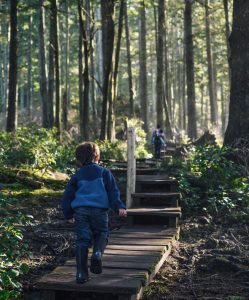Charlotte Mason and TLP Part Two: "The Gentle Art of Learning."
I've stolen the phrase, "The Gentle Art of Learning," from Karen Andreola's book "A Charlotte Mason Companion," because it is the perfect description of how many believe we should educate our children. There is no valid reason for the strict schedules and rigid pre-set goals forced upon many students by arbitrary scope and sequences and standardized tests. Children are predisposed to learn, but this does not mean they thrill to be tested, or are interested in the same things a distant national organization deems appropriate.
Children are curious by nature.
That innate inquisitiveness is too often quenched by instructors more interested in teaching a child to sit still than engaging his bright mind. We tell children facts they don't care about, then test them on those facts and wonder why our days are anything but "gentle." We fill the time with commands to "sit still," and "pay attention," and "stop wiggling," and "hurry up and finish that," and "everyone else is done; we're waiting for you."
Or, we sit them in front of a computer and expect them to learn by listening to lectures or watch as others experiment and discover. We quench their natural curiosity by forcing them to be passive learners, expecting them to accept the knowledge someone has gleaned, without encouraging them to scratch for their own discoveries.
Ask don't tell.
In the writing world, we are admonished to "show don't tell," meaning not to tell our readers the character is angry, but show the anger by describing the narrowed eyes, clenched fists, pursed lips. In the teaching world, we would do well to "ask don't tell." That's a keystone to discovery style learning. What does that look like?
Consider you and your students are taking a nature walk. As you go along you hear a bird chirping. Stop walking. Say, "Do you hear that bird?" The children stop to listen. "Can you find it?" The children look around. One points to a nearby bush, "There it is!" You excitedly point, also. "Describe it to me," you say and listen as the children tell you what they see. "Can you make the sound it's making?" you ask and listen as the children try. "What do you think its been eating?" The children look around for a food source. "Those berries," one suggests. "Worms," another offers. You say, "I wonder how it eats without teeth," or "I wonder what kind of nest it builds." Even if you know the answer. If the nest is in view, great, ask the children to find it, to describe it, to wonder about it.
You go to the library and find books that will answer the questions brought up on the walk. The children find the answers to the questions you've asked, or to questions they've thought of. You know you've lit their candle when one answer sparks three more questions.
This is the gentle art of learning. It's using a child's natural curiosity to direct him to seek answers. No need to test. No need to check "birds" off the scope and sequence. No need to assign x number of pages to read in the science book.
Prayer
Gracious Father, we bow before your throne and praise you for your holiness, mercy, and compassion. We praise you as Creator and thank you for this beautiful world. Please help us understand the gentle art of learning as you would have us understand, as you also teach us. Thank you for leading us on our homeschool journey. We come to you because of Jesus.

